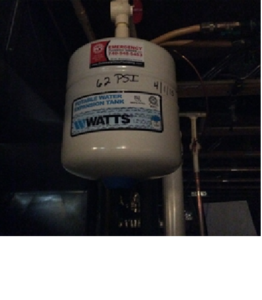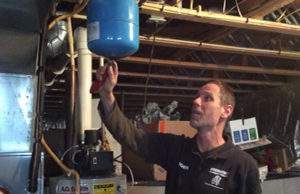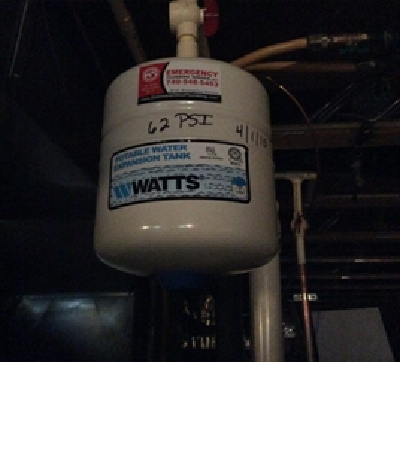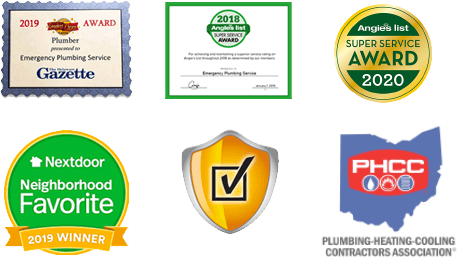

607.3.2 Backflow prevention device or check valve. Where a backflow prevention device, check valve or other device is installed on water supply system utilizing storage water heating equipment such that thermal expansion causes an increase in pressure, a device for controlling pressure shall be installed.
In layman’s terms, if you have a check valve device on your water supply then you need a Thermal Expansion tank. So if you have Del-Co Water or Delaware City Water you need an expansion tank. Does this mean the water companies going around house to house making sure everyone who is supposed to have an expansion tank has one? No, however, if you are remodeling or selling your home where you need a permit or have an inspection done a Thermal Expansion Tank WILL be required by the Building Department.
These check valves do such a great job that they create a thermal expansion in your hot water tank which is why you need a Thermal Expansion Tank. You see, pressure builds in all water systems because hot water expands and when it heats up the pressure inside the main tank will be released over into the Thermal Expansion Tank until the pressure is normalized. If you do not have a Thermal Expansion Tank and you have a closed-loop system (check valve) your T&P Valve will start to leak at around 150 PSI and 210*F to relieve the pressure. This kind of pressure build-up could cause your water heater to explode. Also, if you do not have a Thermal Expansion Tank and you have a closed-loop system you are putting added pressure on your entire plumbing system, for example, your washer, toilet, and dishwasher. Some warranties may be voided if there is a faulty or no Thermal Expansion Tank in place and you are required to have one due to your closed-loop system. The Thermal Expansion Tank will add life to your water heater and your plumbing fixtures.
For optimal performance when installing a Thermal Expansion Tank, it is important to match the water pressure coming into the house to the pressure in the Thermal Expansion Tank. Also, when mounting the Thermal Expansion Tank, it should be mounted on the cold side between the water heater and the main water shut-off valve. It is important to mount properly because if the tank fills with water it gets very heavy. A 2-gallon tank full of water is over 16lbs. That is a lot of weight hanging on a line, especially a CPVC line.
The size of the Thermal Expansion Tank you need is based on the size of your water heater(s). Examples for sizing in this area are 52 G Water Heater or less = 2 G Thermal Expansion tank, 60 G Water Heater(s) or more = 4.5 G Thermal Expansion Tank. Depending on the quality of water a Thermal Expansion tank lasts an average of 5-8 years. Finally, testing your Thermal Expansion Tank is important and should be tested once a year when you flush your water heater. If your Thermal Expansion Tank is hanging from a pipe, you would push the Schrader Valve (air valve), located on the bottom of the tank, if the air is released then the tank is working properly. If nothing or water comes out your tank is bad, and needs replaced. If you have any questions regarding your Thermal Expansion Tank or would like to know if you need one, give Emergency Plumbing, Heating & Air a call at (740) 217-0450.
For a full list of our services please visit our website at www.emergencyplumbingservice.com.









